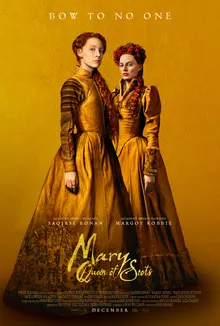Historical accuracy of Mary Queen of Scots

Historical accuracy of Mary Queen of Scots

Characters
Mary Stuart (Mary Queen of Scots)
The film portrays Mary as a strong and determined woman, which is generally consistent with historical interpretations. However, her complexities and flaws may be downplayed or romanticized.
Elizabeth I
Elizabeth I is depicted as a shrewd and politically astute monarch, which is accurate. However, the film simplifies some aspects of her personality and her relationships with her advisors.
Lord Darnley (Henry Stuart)
Lord Darnley was a real historical person whose marriage to Mary and subsequent death were pivotal events.
James Hepburn, Earl of Bothwell
The Earl of Bothwell's involvement with Mary and the circumstances surrounding their marriage are historical facts. While the film might interpret his motivations, his existence and key actions are historically accurate.
John Knox
John Knox was a significant historical figure during Mary's reign, known for his strong religious beliefs and influence on Scottish society. The film's portrayal of his role as a religious and political force is historically accurate.
Lord Burghley (William Cecil)
William Cecil's role as Elizabeth I's chief advisor and his involvement in the political strategies concerning Mary are well-established historical facts. His depiction in the film as a key political player aligns with historical records.
Story
Mary's relationship with Elizabeth I
The film depicts a complex relationship between Mary and Elizabeth, including a face-to-face meeting, which never happened in reality. While they corresponded and their lives were intertwined, the film dramatizes their personal connection.
Mary's marriage to Lord Darnley
Mary's marriage to Darnley and the events surrounding his murder are based on historical events. However, the film takes some liberties with the details and the motivations of those involved.
The murder of Lord Darnley
The film depicts the murder of Darnley, but the specific circumstances and the level of Mary's involvement are still debated by historians.
Mary's marriage to Bothwell
Mary's marriage to Bothwell shortly after Darnley's death is a historical fact. However, the film simplifies the political context and the widespread suspicion surrounding their union.
Mary's claim to the English throne
Mary's claim to the English throne through her lineage is a key element of the historical narrative and is accurately represented in the film.
The religious tensions of the era
The film highlights the religious tensions between Catholics and Protestants, which were a major factor in the political events of the time.
The execution of Mary
The film accurately depicts the execution of Mary, Queen of Scots, which was a pivotal event in her life and in Anglo-Scottish relations.
The influence of advisors on the queens
The film correctly portrays the significant influence of advisors on both Mary and Elizabeth, highlighting the importance of court politics.
The depiction of childbirth in the 16th century
The film's depiction of childbirth, while potentially dramatized, reflects the high risks and difficulties associated with childbirth in the 16th century.
The depiction of mental health in the 16th century
The film hints at some psychological struggles faced by the characters. However, our understanding of mental health in the 16th century is limited, making definitive judgments about the accuracy of these portrayals difficult.
Setting
The Scottish court and political landscape
The film attempts to recreate the atmosphere of the Scottish court, but some aspects of the political landscape and the relationships between various factions are simplified for dramatic purposes.
The portrayal of gender roles in the 16th century
The film effectively conveys the challenges faced by women in positions of power during the 16th century, highlighting the limitations and expectations they faced.
The clothing and costumes of the period
The costumes in the film are generally evocative of the period, but some artistic license may have been taken with the specific designs and fabrics used.
The language and dialogue of the characters
The language used by the characters in the film is modern and does not reflect the language spoken in the 16th century.
